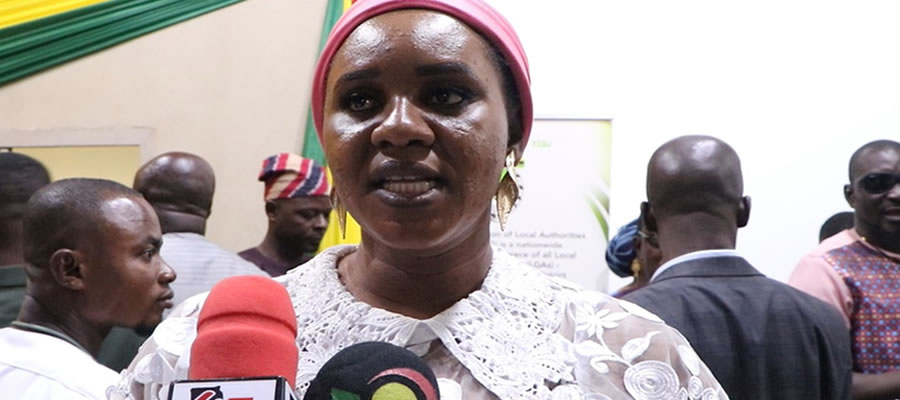

ECONOMY OF THE MUNICIPALITY
The structure of the Municipal’s economy is built around Agriculture. Overall, about 82.2% households in the Municipality are into agriculture as a full time means of livelihood. The remaining households attain their livelihood from the other sectors of the economy such as service, manufacturing /industry and trading.
Types of agricultural activities under taken by Households
Agricultural business in the District is a universal household livelihood activity for the people. Table 1.12 presents households in agriculture within the Municipality. Out of the 82.2% indicated earlier, 66.8 percent of the urban households are into agriculture, as against 88.8 percent rural households. However, fish farming recorded the least (only 0.1% households), which is an indication that limited attention has been given to fish farming activities in the district, especially in the rural areas (0.0%). This calls for more interventions and efforts to encourage fish production in the Municipality.
Major Activities of the District Economy
The Municipal’s economy mainly revolves around three major sectors. These include agriculture, commerce &services and industry/manufacturing sectors as indicated before.
As indicated in Figure 1.7, the Municipal’s economically active population (72 % of all persons 15 years and over) is engaged in the agriculture for survival. This translates into 71% and 73 % males and females respectively.
It can be deduced from the above graphical presentation that the majority (17.1%) of the urban working population are employed in the commerce/ services sub-sector. On the other hand, majority (64.4%) of the rural working population are employed in the agricultural sector. The industry sector employs the minority of the working population represented by 4.4 and 0.6 percent of the total working population of the District respectively.
As indicated in the table below, food and vegetable crops currently grown in commercial quantities include Yam, Cassava, chilli-pepper, maize, oil palm, cashew, cocoa and plantain. Major production centres include Kwameseikrom, Atuna, Adamsu, Miremano etc
Farmers in the Municipality virtually practice the traditional shifting cultivation, bush fallow or slash and burn methods, which are associated with problems like deforestation, soil erosion and decline in soil fertility. Farmers therefore need to be sanitized on the negative effects of such methods so as to increase food production and sustain the environment.
Commence and Services
Commercial activities in the Municipal are very prominent because it is a nodal town and shares boarder with La Cote D’Ivoire. Commerce in the Municipal is restricted to buying and selling of predominantly agricultural produce, locally manufactured item and second hand items. Commercial activities are high during the weekly market days. There are four weekly markets in the district namely; Drobo market (Tuesdays), Kwameseikrom market (Wednesdays), Zezera market (Thursdays) and Atuna market (Fridays). Besides these weekly markets, there are stores in other towns’ centres where a wide range of goods are sold. The commerce and service sector in the district is still underdeveloped and needs a major boost to make it more vibrant to serve the changing trends of commerce and distributive trading.
Many traders also come from La Cote D’Ivoire to in these markets. These traders bring along a wide range of goods to promote commercial activities in the Municipality. Their contribution to the weekly markets gives the Municipal’s commerce and service sector an international touch.
The commercial activities of the Municipality are supported by financial institutions. These include, Ghana Commercial Bank, Drobo Community Bank, GN Bank and agencies of Kaaseman, Nkoraman and Suma Rural Banks. These Banks offer financial services to boast commerce in the Municipality with GCB offering Visa and ATM services. Apart from the agency of the Nkoraman Rural Bank which is located in Adamsu, all the other banks operate in the Drobo/Japekrom area.
Most communities in the district have low accessibility to banking services. Feasible areas for locating agencies of banks in the Municipality are Zezera, Miremano, Kwameseikrom, and Atuna. Households within the areas with little access to banking services have low propensity to save. As a result, the rate of investment by households in these areas is low.
Apart from these Banks, two credit unions are also operating in the Municipality; these include BACCSOD and Dormaa Area Teachers’ Cooperative Credit Union.
Household Income and Expenditure Income levels of households in the Municipality vary extensively and are very difficult to analyse. This is partly so because the economic parameters of the district is highly informal and a mixture of low formal income earners. However, an average survey on household income reveals that, the people earn their income mainly from agricultural related activities. It could also be observed from the expenditure patterns of the people that funerals and social gatherings controlled greater proportion of the wealth generated. This is usually manifested in the kind of heavy funerals being celebrated by the people.
There is therefore the need for District level stakeholders engagement to formulate necessary programmes and activities to support the agriculture industry, through which the needed household income generation can be enhanced. Similar efforts should be put in place to channel household expenditure levels towards productive venture to prevent waste of income.
Problems confronting the Municipal economy
A critical analysis of the district’s economic infrastructure reveals that, the District is highly confronted with poor economic infrastructure in the area of feeder roads, electricity coverage, and weak telecommunication service among others. These need serious attention in order to enhance local economic growth of the area.
Food Security
Food Security can be defined as availability of good quality nutritious food, hygienically packaged and attractively presented, available in sufficient quantities all year round and located at appropriate places at affordable prices (MOFA, 2002).
In this connection, the District sees it important to detail out measures to deal with food security concerns at the district level. The Municipal is an agrarian one which should naturally not suffer from food insufficiency, agriculture thus crops and animals production is mostly cherished and well-practiced by many (about 72% of the population). The introduction of government flagship programme thus “Planting for Food and Jobs” would also help in maintaining food security in the Municipality. The issues that should be of great concern are, land and environmental management which ensure natural sustainability in the Municipality.
Again, aquaculture which has a natural potential in the Municipality needs to be further explored and developed as a compliment to food crops production. Municipal stakeholders should also examine ways of ensuring that raw agricultural produce, especially perishable ones are properly stored so that the benefits can accrue to the district population at appropriate time.
Date Created : 6/9/2023 12:00:00 AM












 facebook
facebook
 twitter
twitter
 Youtube
Youtube
 +233 593 831 280
+233 593 831 280 0800 430 430
0800 430 430 GPS: GE-231-4383
GPS: GE-231-4383 info@ghanadistricts.com
info@ghanadistricts.com Box GP1044, Accra, Ghana
Box GP1044, Accra, Ghana